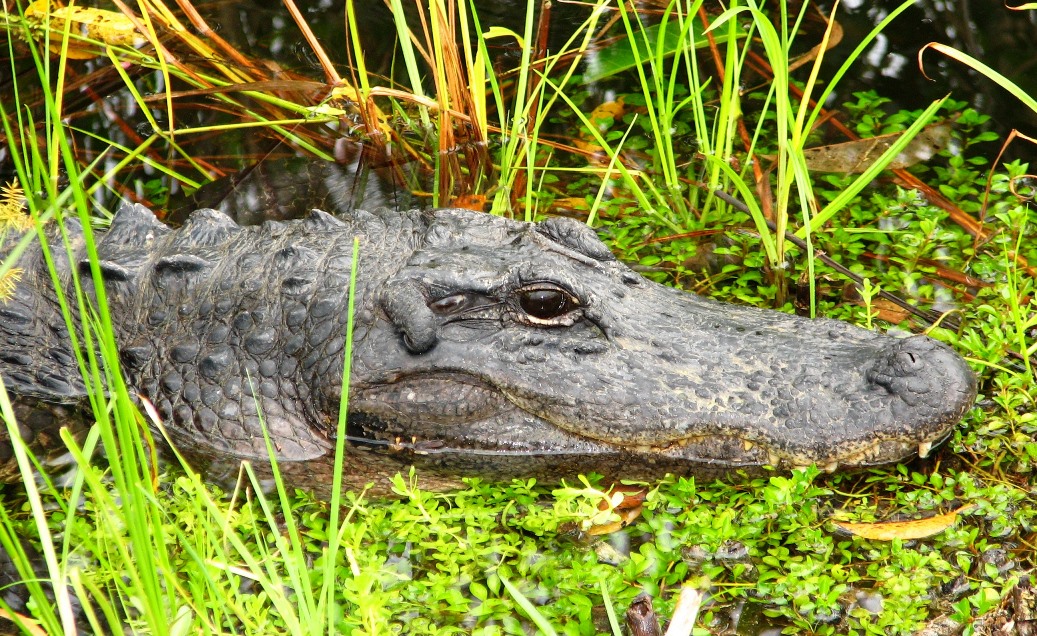The Maurepas Swamp Wildlife Management Area (WMA) is a 122,098 acre tract of protected area located in parts of Ascension, Livingston, St. John the Baptist, St. James and Tangipahoa Parishes in Louisiana, encircling three sides of Lake Maurepas.
On September 19, 2017 the Louisiana Coastal Protection and Restoration Authority (CPRA) was awarded a $14.2 million grant from the Gulf Coast Ecosystem Restoration Council (RESTORE Council) to complete re-engineering and redesign activities for the Mississippi River Reintroduction into Maurepas Swamp project under the Resources and Ecosystems Sustainability, Tourist Opportunities and Revived Economies of the Gulf Coast States Act of 2012 (RESTORE Act).
“The River Reintroduction into Maurepas Swamp project is a Coastal Master Plan priority and has long been discussed at both the state and federal levels as a key restoration project for Louisiana. We are excited to advance this important project toward construction readiness”, said Johnny Bradberry, Chairman of the CPRA Board. “This grant represents a significant milestone for our comprehensive, basin-wide strategy for restoration of the Maurepas Swamp ecosystem. Implementation of this project is urgently needed to prevent further land loss, conversion to open water, and rising salinity levels throughout the entire Pontchartrain Basin”, said Michael Ellis, Executive Director of the CPRA.”
Maurepas Swamp WMA is mostly flooded cypress tupelo swamp. Water levels in this area are influenced by rain, wind, and tides. Heavy rains accompanied with east winds can cause extensive flooding in the area for days at a time. Other vegetation found on the WMA includes bulltongue, cattail, submerged aquatics, red maple, American elm, sugarberry, and nuttall, water, and obtusa oak.
Invasive species include water hyacinth, Bidens sp. “fourchette”, and an aquatic fern known as common salvinia. The presence of this invasive vegetation has made much of the area unsuitable for the large numbers of waterfowl that historically overwintered in this vast swamp. These freshwater reintroduction projects are designed to revive the swamp and improved control of invasive plant species that have overtaken much of this important and scenic area.
This project is one of seven projects the RESTORE Council has selected for funding under its Initial Funded Priorities List that will directly benefit Louisiana. The Maurepas Swamp is located west of Lake Pontchartrain and is one of the largest areas of forested wetlands along the Gulf Coast, encompassing approximately 57,000 hectares of bald cypress-tupelo swamp. Extensive man-made changes to the historical flood plain of the Lower Mississippi River have affected the health and stability of this area by reducing the influx of sediments that are essential for offsetting subsidence and the lack of freshwater.
The River Reintroduction into Maurepas Swamp project is being designed to construct a 2,000 cubic feet per second gated structure in the Mississippi River and five miles of conveyance channel near Garyville to reconnect the river to the swamp and improve the health and longevity of this ecosystem. This project will be the first dedicated river diversion project into the forested wetlands of Louisiana designed specifically for swamp forest restoration, with the goal being to reduce or minimize loss of swamp forest habitat in the project area through the reintroduction of Mississippi River water.
Once fully constructed, in addition to restoring and enhancing a total of 18,300 hectares (approximately 45,220 acres) of forested wetland, this project would provide a host of other benefits to wildlife that are dependent on cypress-tupelo swamps. Increased primary productivity and water quality will increase food resources and subsequently increase secondary productivity of freshwater fish.
Wading birds, migratory birds, bald eagles, alligators and other wildlife species will also benefit. The project could maintain stands of mature bald cypress and other woody vegetation, which would ensure that suitable nesting areas are available for numerous bird species. This project will also enhance community resilience as the Maurepas Swamp provides a significant buffer from storm surge coming across Lakes Pontchartrain and Maurepas helping to protect several nearby communities in St. John the Baptist, Ascension, Livingston, and St. James Parishes, as well as important industries.
The RESTORE Act allocates 80 percent of all Clean Water Act penalties paid by those responsible for the 2010 Deepwater Horizon Gulf oil spill disaster to Gulf Coast restoration activities. The RESTORE Act contains five different funding components. The Council Selected Restoration Component directs 30 percent of the funds deposited into the Trust Fund to a Gulf-wide Comprehensive Ecosystem Restoration Plan (the “Comprehensive Plan”). The RESTORE Council’s Initial Comprehensive Plan was approved in August 2013. On December 9, 2015, the RESTORE Council approved an Initial Funded Priorities List which contained a list of the first projects and programs to be funded under the Council’s Initial Comprehensive Plan.
Louisiana’s Coastal Protection and Restoration Authority is the single state entity with authority to develop, articulate, implement, and enforce a comprehensive coastal protection and restoration Master Plan of unified vision to reduce hurricane storm surge flood impact, to restore Lousiana’s bountiful natural resources, to build land to protect the nation’s critical energy infrastructure, and to secure Louisiana’s coast now and for future generations.
Featured photo by Storm Cunningham.

